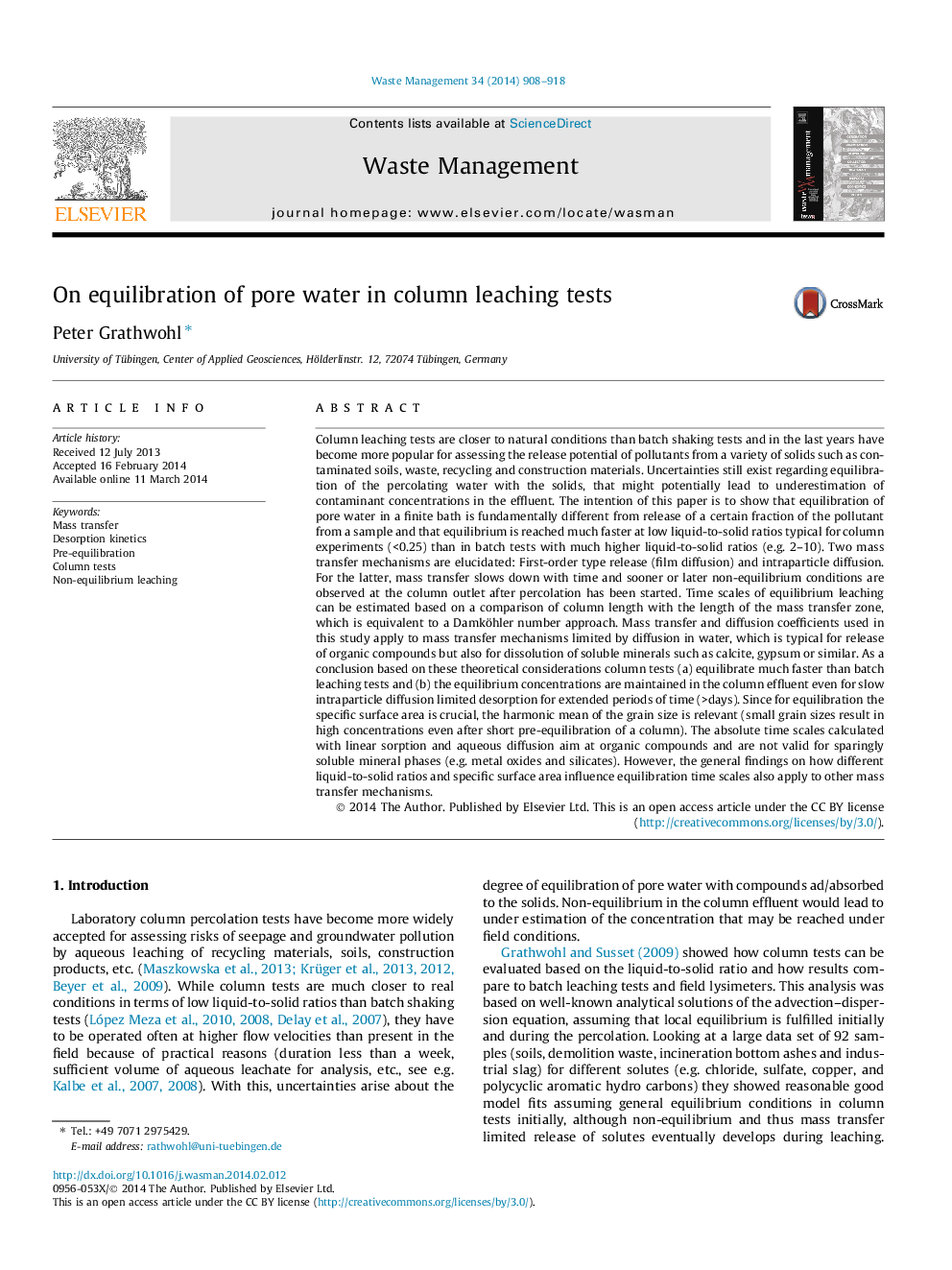| کد مقاله | کد نشریه | سال انتشار | مقاله انگلیسی | نسخه تمام متن |
|---|---|---|---|---|
| 6354915 | 1315026 | 2014 | 11 صفحه PDF | دانلود رایگان |
عنوان انگلیسی مقاله ISI
On equilibration of pore water in column leaching tests
ترجمه فارسی عنوان
در تعادل آب منافذ در آزمایش های شستشوی ستون
دانلود مقاله + سفارش ترجمه
دانلود مقاله ISI انگلیسی
رایگان برای ایرانیان
موضوعات مرتبط
مهندسی و علوم پایه
علوم زمین و سیارات
مهندسی ژئوتکنیک و زمین شناسی مهندسی
چکیده انگلیسی
Column leaching tests are closer to natural conditions than batch shaking tests and in the last years have become more popular for assessing the release potential of pollutants from a variety of solids such as contaminated soils, waste, recycling and construction materials. Uncertainties still exist regarding equilibration of the percolating water with the solids, that might potentially lead to underestimation of contaminant concentrations in the effluent. The intention of this paper is to show that equilibration of pore water in a finite bath is fundamentally different from release of a certain fraction of the pollutant from a sample and that equilibrium is reached much faster at low liquid-to-solid ratios typical for column experiments (<0.25) than in batch tests with much higher liquid-to-solid ratios (e.g. 2-10). Two mass transfer mechanisms are elucidated: First-order type release (film diffusion) and intraparticle diffusion. For the latter, mass transfer slows down with time and sooner or later non-equilibrium conditions are observed at the column outlet after percolation has been started. Time scales of equilibrium leaching can be estimated based on a comparison of column length with the length of the mass transfer zone, which is equivalent to a Damköhler number approach. Mass transfer and diffusion coefficients used in this study apply to mass transfer mechanisms limited by diffusion in water, which is typical for release of organic compounds but also for dissolution of soluble minerals such as calcite, gypsum or similar. As a conclusion based on these theoretical considerations column tests (a) equilibrate much faster than batch leaching tests and (b) the equilibrium concentrations are maintained in the column effluent even for slow intraparticle diffusion limited desorption for extended periods of time (>days). Since for equilibration the specific surface area is crucial, the harmonic mean of the grain size is relevant (small grain sizes result in high concentrations even after short pre-equilibration of a column). The absolute time scales calculated with linear sorption and aqueous diffusion aim at organic compounds and are not valid for sparingly soluble mineral phases (e.g. metal oxides and silicates). However, the general findings on how different liquid-to-solid ratios and specific surface area influence equilibration time scales also apply to other mass transfer mechanisms.
ناشر
Database: Elsevier - ScienceDirect (ساینس دایرکت)
Journal: Waste Management - Volume 34, Issue 5, May 2014, Pages 908-918
Journal: Waste Management - Volume 34, Issue 5, May 2014, Pages 908-918
نویسندگان
Peter Grathwohl,
